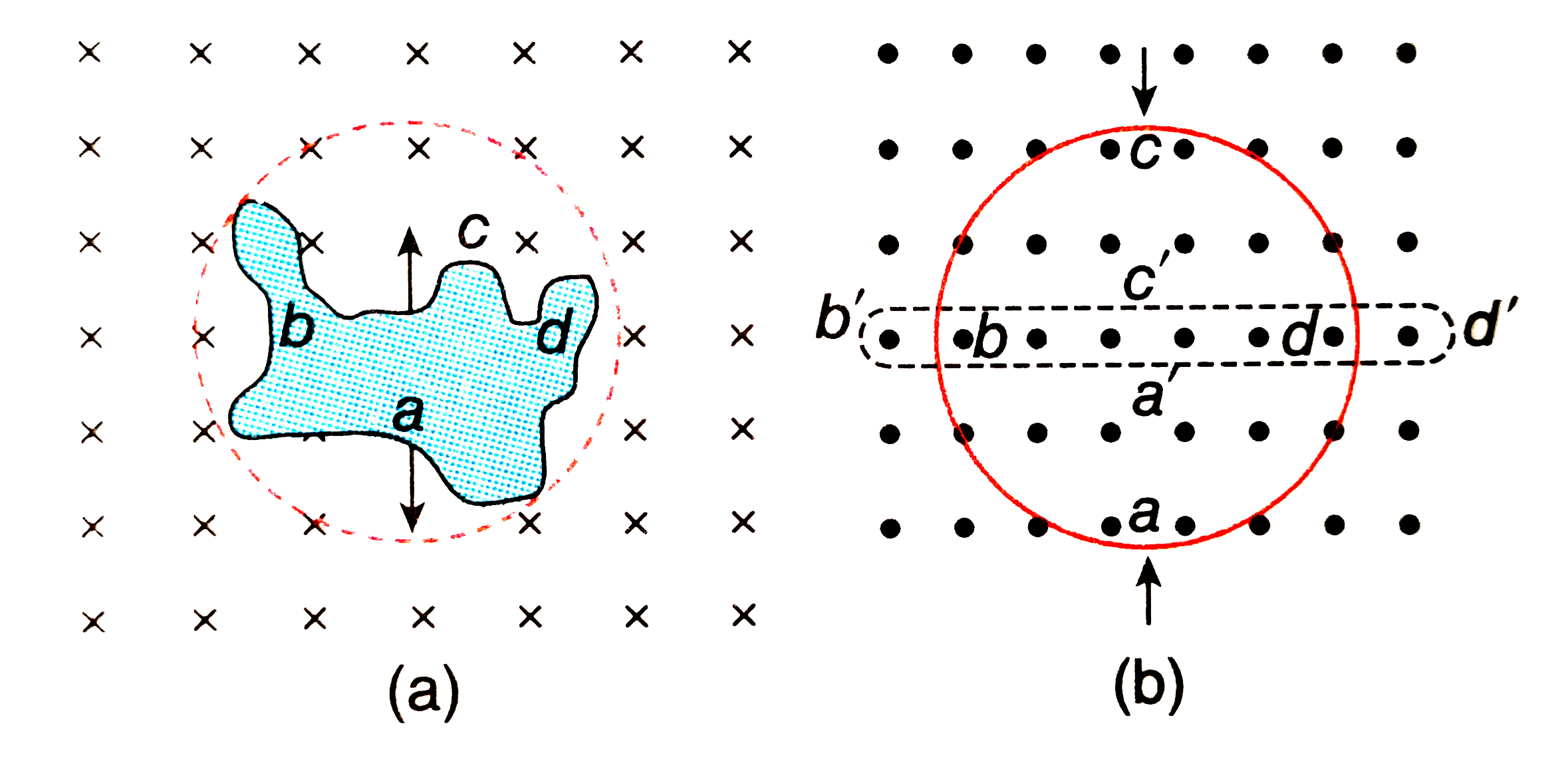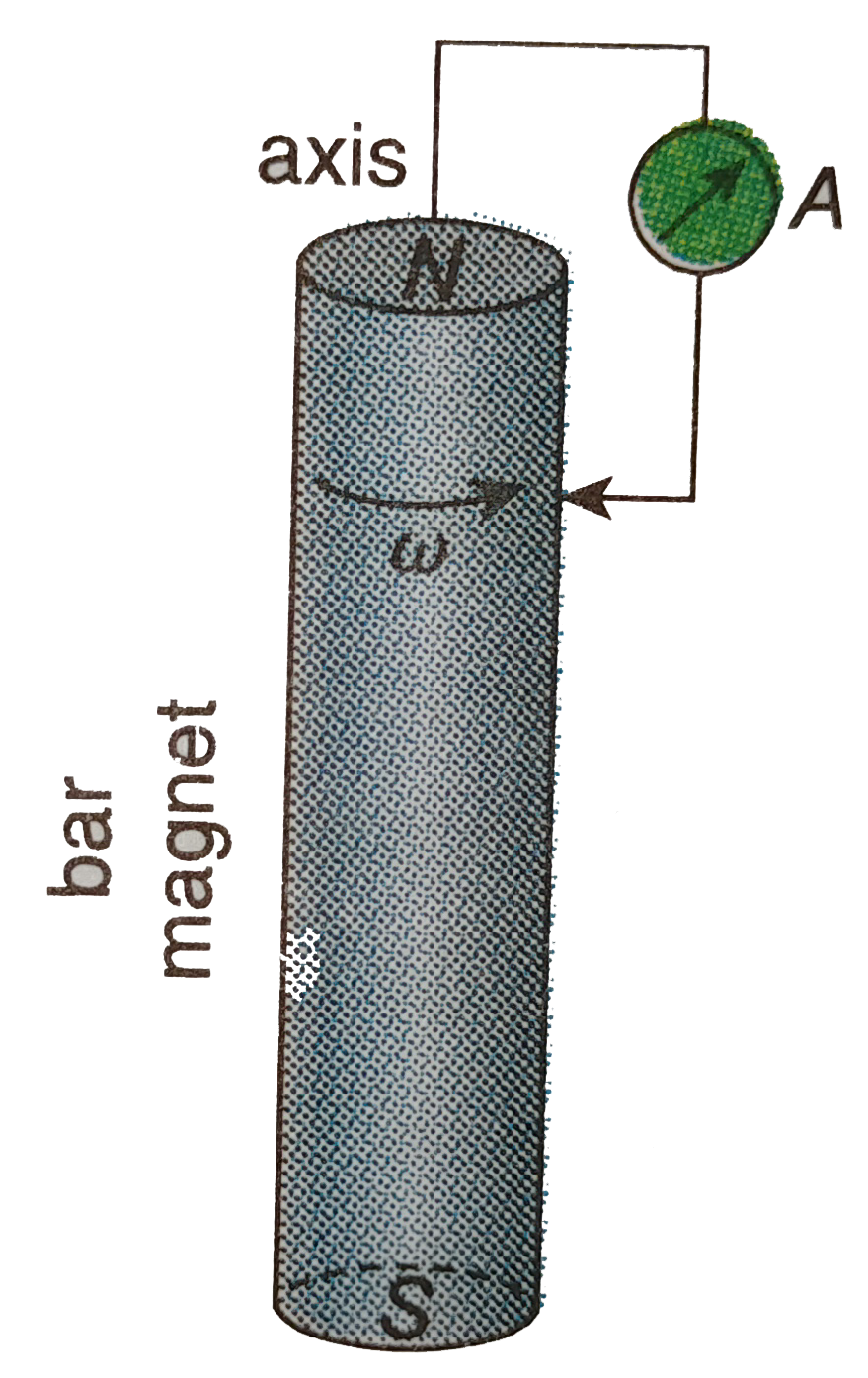A coil of resistance R having n turns is connected with a galvanometer of resistance 4R. If the magnetic flux changes from ϕ1 to ϕ2 in time t in the circuit, what will be the value of induced current? Solution in Bengali
Effective resistance =R+4R=5R
For n turns the effective change in the magnetic flux =n(ϕ2−ϕ1)
So, the emf induced = −n(ϕ2−ϕ1)t
∴ Induced current = −n(ϕ2−ϕ1)5Rt
Topper's Solved these Questions
- ELECTROMAGNETIC INDUCTION & ALTERNATING CURRENTBOOK - CHHAYA PUBLICATIONCHAPTER - ELECTROMAGNETIC INDUCTION & ALTERNATING CURRENTEXERCISE - NCERTS TEXTBOOK QUESTIONS WITH ANSWER HINT
21 Videos
- ELECTROMAGNETIC INDUCTION & ALTERNATING CURRENTBOOK - CHHAYA PUBLICATIONCHAPTER - ELECTROMAGNETIC INDUCTION & ALTERNATING CURRENTEXERCISE - NCERT EXEMPLAR QUESTIONS WITH ANSWER HINT (MCQ-1)
5 Videos
- ELECTROMAGNETIC INDUCTION & ALTERNATING CURRENTBOOK - CHHAYA PUBLICATIONCHAPTER - ELECTROMAGNETIC INDUCTION & ALTERNATING CURRENTEXERCISE - SECTION RELATED QUESTIONS
29 Videos
- ELECTRIC POTENTIAL BOOK - CHHAYA PUBLICATIONCHAPTER - ELECTRIC POTENTIAL EXERCISE - CBSE Scanner
13 Videos
- ELECTROMAGNETIC WAVES BOOK - CHHAYA PUBLICATIONCHAPTER - ELECTROMAGNETIC WAVES EXERCISE - CBSE SCANNER
17 Videos
Similar Questions
Use Lenz's law to determine the direction of induced current in the situations described in the figure :

A wire of irregular shape turning into a circular shape.
View SolutionA cylinder bar magnet is rotated about its axis. A wire is connected from the axis and is made to touch the cylindrical surface through a contact. Then

View SolutionWhat do you mean by electromagnetic induction?
View SolutionA test charge q is moved without acceleration along the path from A to B from B to C in electric field E as shown in fig.

(i) Calculate the potential difference between A and C.
View SolutionWhat are the directions of electric and magnetic field vectors relative to each other and relative to the direction of propagation of electromagnetic waves?
View SolutionA coil having n turns and resistance R Omega is connected with a galvanometer of resistance 4R Omega . This combination is moved in time t seconds from a magnetic field W_(1) weber to W_(2) weber. The induced current in the circuit is
View SolutionThe magnetic flux linked with a coil of N turns and resistance R changes from ϕ1 to ϕ2. Show that the charge that has passed through the coil is
q=−N(ϕ2−ϕ1)R.
View Solutionएक छल्ले से गुजरने वाले चुम्बकीय फ्लक्स का मान ϕ1 से ϕ2 तक एकसमान दर से t समय में बढ़ाया जाता है | यदि छल्ले का प्रतिरोध R हो तो छल्ले में प्रेरित धारा का मान ज्ञात कीजिए |
View Solutionएक कुण्डली में चुम्बकीय फ्लक्स ΦB निम्न समीकरण के अनुसार समय के साथ बदल रहा है , ΦB=4t2+10t+5 मिलीवेबर | 4 सेकण्ड के बाद कुण्डली में प्रेरित विधुत वाहक बल कि गणना कीजिए ।
View Solutionएक छल्ले से गुजरने वाले चुम्बकीय फ्लक्स का मान ϕ1 से ϕ2 तक एकसमान दर से t समय में बढ़ाया जाता है । यदि छल्ले का प्रतिरोध R हो तो छल्ले में - (i) प्रेरित विधुत वाहक बल, (ii) प्रेरित धारा तथा (iii) कुल प्रेरित आवेश के मान लिखिये ।
View SolutionA coil having 'n' turns and resistance R Omgea is connected with a galvanometer of resistance 4R Omega . This combination is moved in time 't' seconds from a magnetic flux phi_(1) . Weber to phi_(2) Weber. The induced current in the circuit is
View Solutionसिध्द करो कि जब किसी कुण्डली से सम्बध्द फ्लक्स में परिवर्तन ϕ1 से ϕ2 होता है तो प्रेरित आवेश का मान q=NR(ϕ1−ϕ2) होता है। यहाँ N कुण्डली में फेरों कि संख्या तथा R कुण्डली का प्रतिरोध है।
View SolutionA coil having n trurns and resistance RΩ is connected with a galvanometer of resistance 4RΩ this combination is moved in time t seconds from a magnetic flux ϕ1 weber to ϕ2 weber The induced current in the circult is
View SolutionShow that if the flux of magnetic induction through a coil changes from ϕ1 to ϕ2 then the charge q that flows through the circuit of total resistance R is given by q=ϕ2−ϕ1R where R is the resistance of the coil.
View SolutionThe magnetic flux through a coil varies with time t as follows:
ϕt=(8t3−6t2+t−5)Wb
What is the induced current through the coil at t = 4 s, given that the resistance of the coil is 10 Ω and the magnetic flux through the coil is perpendicular to its plane?
View Solution
